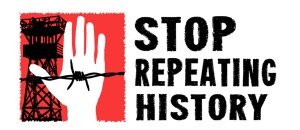Coram Nobis Cases
General term for the 1980s reconsideration of the three cases of Japanese Americans who challenged the exclusion orders or curfew that reached the Supreme Court in the 1940s. The reconsiderations were based on research in the early 1980s by legal scholar Peter Irons that revealed the government had knowingly presented false charges of Japanese American disloyalty and espionage. These revelations led attorneys for Gordon Hirabayashi, Fred Korematsu, and Minoru Yasui to petition for a writ of error coram nobis, a somewhat obscure procedure used to correct a fundamental error of fact in a trial after the defendant has been found guilty and served his sentence. These cases—whose five year journey would parallel and sometimes mesh with the Redress Movement effort to seek reparations in Congress—were widely publicized and came to hold great symbolic value for the Japanese American community.
Once the three men agreed to pursue this strategy—an unusual one that was not guaranteed to work—a volunteer legal team was assembled with the intent on filing petitions for the three men in the courts where they were originally tried in Seattle, San Francisco, and Portland respectively. Dale Minami headed the San Francisco team that would represent Korematsu, Peggy Nagae the Portland team representing Yasui, and Kathryn Bannai the Seattle team representing Hirabayashi. The legal team prepared identical coram nobis petitions for the three cases.
Korematsu's was the first of the petitions to be filed on January 19, 1983. Judge Marilyn Patel, whom the coram nobis team felt would be sympathetic to their side, was assigned to the case. Justice Department lawyer Victor Stone represented the government on all three cases. After fruitless discussions about a presidential pardon (in rejecting the offer of a pardon, Korematsu famously replied, "We should be the ones pardoning the government") and requests for delays by the government, Stone filed the government's response on October 4, 1983: a two page document that asked the court to vacate Korematsu's conviction and to dismiss the petition. A month later, Judge Patel held a hearing on the Korematsu petition, denying Stone's motion to dismiss and granting the coram nobis petition.
The Yasui and Hirabayshi petitions were filed two weeks after Korematsu's, and the two cases resulted in opposite outcomes. In both cases, the government again asked the court to vacate the convictions but dismiss the petition. In Yasui's case, Portland Judge Robert C. Belloni granted the government's motion—and Yasui's request—to vacate his original conviction but refused to conduct a full evidentiary hearing. Yasui appealed this part of the order, but died in 1986 before the issue could be heard before the Ninth Circuit Court of Appeal.
In Seattle, Judge Donald S. Voorhees came to a different conclusion on Hirabayashi's petition in a May 18, 1984 hearing, denying the government's motion and scheduling an evidentiary hearing for June 17, 1985, over a year later. The two week hearing featured former Justice Department lawyer Edward Ennis as the star witness for the coram nobis team, personally recalling the suppression of evidence in 1943–44. David Lowman, the most vocal proponent of the "Magic Cables," was the star witness for the government. On February 10, 1986, Judge Voorhees issued his written opinion, essentially agreeing with the coram nobis team and vacating Hirabayashi's conviction for violating the evacuation order. Oddly, he did not vacate the curfew conviction. Both sides subsequently appealed, the appeal being heard by a three judge panel on March 2, 1987. In Sept. 1987, in a unanimous opinion authored by Judge Mary M. Schroeder, the panel agreed with the charges of misconduct noting that the Supreme Court decisions "probably would have been materially affected" and reversed Voorhees on the curfew conviction, vacating it as well.
This text about coram nobis cases is from Densho, authored by Brian Niiya, Densho
